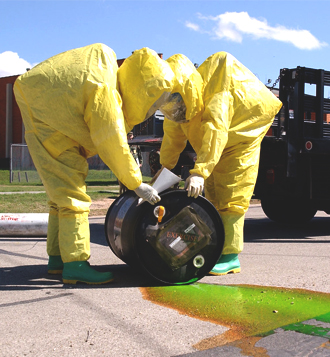
HAZMAT Management
Hazardous Material is commonly referred to as HAZMAT or Dangerous Goods by industry and the U.S. Government. Occupational Safety & Health Administration (OSHA) in 29 CFR 1910.1200, and GSA in FED-STD-313 define Hazardous Material as:
Any item or chemical which is a "health hazard" or "physical hazard", including the following:
- Chemicals that are carcinogens, toxic or highly toxic agents, reproductive toxins, irritants, corrosives, hepatotoxins, nephrotoxins, neurotoxins, agents that act on the hematopoietic system, and agents that damage the lungs, skin, eyes, or mucous membranes;
- Chemicals that are combustible liquids, compressed gases, explosives, flammable liquids, flammable solids, organic peroxides, oxidizers, pyrophorics, unstable (reactive) or water-reactive; and
- Chemicals that, in the course of normal handling, use or storage, may produce or release dusts, gases, fumes, vapors, mists or smoke having any of the above characteristics.
Any item or chemical which, when being transported or moved, is a risk to public safety or is an environmental hazard, and is regulated .HAZMAT also includes any item or chemical which is reportable or potentially reportable or noticeable as inventory under the reporting requirements of the Hazardous Chemical Reporting (40 CFR Part 302), or as an environmental release under the reporting requirements of the Toxic Chemical Release Reporting: Community Right To Know (40 CFR Part 372).These include chemicals with special characteristics which, in the opinion of the manufacturer, can cause harm to people, plants, or animals when released by spilling, leaking, pumping, pouring, emitting, emptying, discharging, injecting, escaping, leaching, dumping, or disposing of in the environment (including the abandonment or discarding of barrels, containers, and other receptacles).